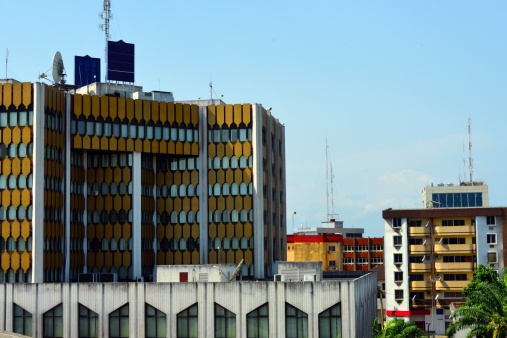GENERAL KNOWLEDGE OF THE COUNTRY
Cameroon is a state in Central Africa, with a surface area of 475,442km2 on the Gulf of Guinea and bordering six countries: Nigeria to the north-northwest, Chad to the north-northeast, the Central African Republic to the east, the Republic of Congo to the southeast, Gabon to the south, Equatorial Guinea to the southwest. Despite the multiple ethnical languages, the official languages are English and French. Cameroon’s two largest cities are Yaoundé, the political capital in the central region, and Douala, which accounts for more than 60% of the country’s economic activity, located in the coastal region. They have 3 and 3.5 million inhabitants respectively.
According to the United Nations Department of Economics and social affairs, Cameroon’s population is estimated at 27,744,989 million in 2022.
Cameroon’s population growth rate is 2.59%, adding over 600,000 people to the population every year. This is likely because of Cameroon’s high fertility rate of 4.60 births per woman. Additionally, the birth rate is 34.71 births per 1,000 people and the death rate is 9.028 deaths per 1,000 people.
Cameroon has two official languages, French and English. 80% of the population is French speaking, but 2 of the 10 provinces, the Southwest and the North West, bordering Nigeria, are predominantly English-speaking. There are more than 250 local dialects throughout Cameroon, including Bamoun, Eton, Ewondo, Bassa, Medumba, Fefe, Bulu, Peul and Hausa. Each local language generally corresponds to a town and no regional language is dominant or common.

Economic Environment
Cameroon has a diversified economy and holds a primary position in Central Africa. Its steady growth rate over the past ten years remains one of the best in the CEMAC zone.
Despite tremors relative to Covid- 19, and the instabilities in the Northern, Southwest, and Northwest Regions of the Country the Cameroonian economy has significant resilience. Surprisingly enough, Cameroon appears at the beginning of 2021 with a reassuring aspect when the global context does not allow optimism. In Cameroon, like in the CEMAC zone where the economy is highly dependent on commodity prices, the 2019 growth, 2.1% fall to -3.1% in 2020 and rebound by 3.4%in 2021. The decline is mainly explained by the drop in demand from Asia and Europe as well as the fall in the price of a barrel of oil.
Although having experienced a slowdown, the “buildings and infrastructure sector remains dynamic 4.19% growth with the completion of the first generation major projects and infrastructure and equipment related to the holding of CHAN 2021 and CAN 2022. The growth recovery in 2021 was attributed among other things to the control of the pandemic, the rise in commodity prices, and the resumption of activities among the main economic partners. Based on statistics from 2016 to 2020, it appears that the sectors of agriculture, forestry, livestock, fisheries, mines and industry are Cameroon’s main sources of revenue.
To achieve the economic emergence of Vision 2035, the government has implemented, on the basis of the Growth and Jobs Strategy Paper (DSCE 2010-2020), the ten-year stage of Vision 2035, an important investment program. Structural projects in key sectors of the economy will accelerate growth, promote and create jobs and reduce poverty. The government has already built various power generation projects to address the sector’s lack of infrastructure, increase the current installed capacity by 1,300 megawatts, and aim to make it a key export sector.
The growth strategy implemented, with the support of international donors, provides for major structural projects in the energy sector (hydroelectric dams, thermal power stations), transport (roads, 2nd quay of the deep-sea port of Kribi, railway lines), the environment (sanitation programs), ICTs as well as housing and urban development. In addition, a new industrial-port complex and a new city are being built in Kribi, which will soon strengthen the predominance of an enlarged economic zone around Douala. These major structural projects, some of which are underway, offer favourable opportunities for subcontracting and are creators of real estate activities, health needs, education, distribution of equipment’s and consumer goods
